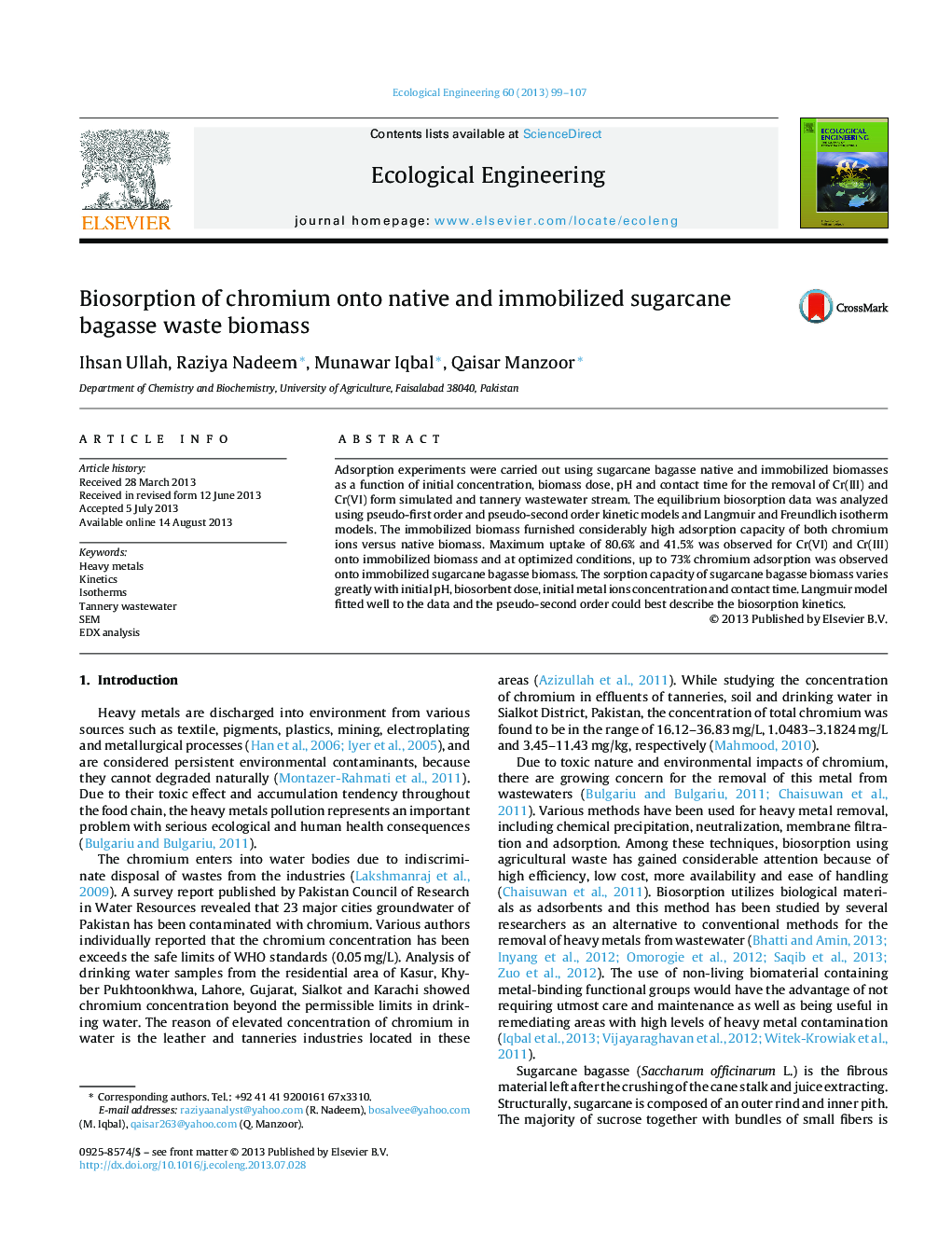| کد مقاله | کد نشریه | سال انتشار | مقاله انگلیسی | نسخه تمام متن |
|---|---|---|---|---|
| 6302357 | 1618038 | 2013 | 9 صفحه PDF | دانلود رایگان |
- The biosorption of chromium was studied using free and immobilized sugarcane bagasse biomass.
- The immobilized form of biomass was more effective in biosorption.
- Conditions and kinetic parameters for biosorption were studied.
- SEM and EDX spectra confirmed biosorption.
- Optimized parameter was applied for removal of chromium form wastewater stream.
Adsorption experiments were carried out using sugarcane bagasse native and immobilized biomasses as a function of initial concentration, biomass dose, pH and contact time for the removal of Cr(III) and Cr(VI) form simulated and tannery wastewater stream. The equilibrium biosorption data was analyzed using pseudo-first order and pseudo-second order kinetic models and Langmuir and Freundlich isotherm models. The immobilized biomass furnished considerably high adsorption capacity of both chromium ions versus native biomass. Maximum uptake of 80.6% and 41.5% was observed for Cr(VI) and Cr(III) onto immobilized biomass and at optimized conditions, up to 73% chromium adsorption was observed onto immobilized sugarcane bagasse biomass. The sorption capacity of sugarcane bagasse biomass varies greatly with initial pH, biosorbent dose, initial metal ions concentration and contact time. Langmuir model fitted well to the data and the pseudo-second order could best describe the biosorption kinetics.
Journal: Ecological Engineering - Volume 60, November 2013, Pages 99-107
